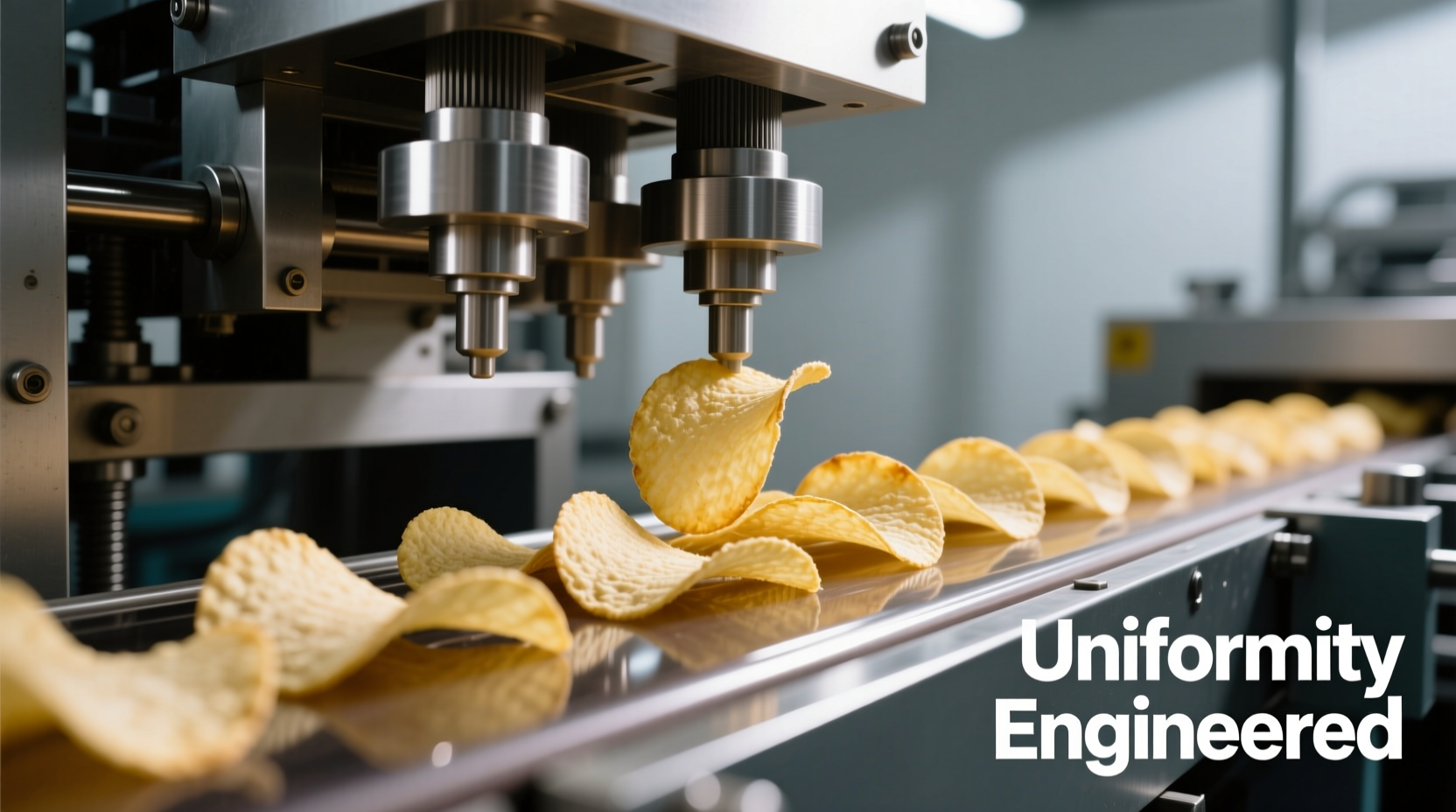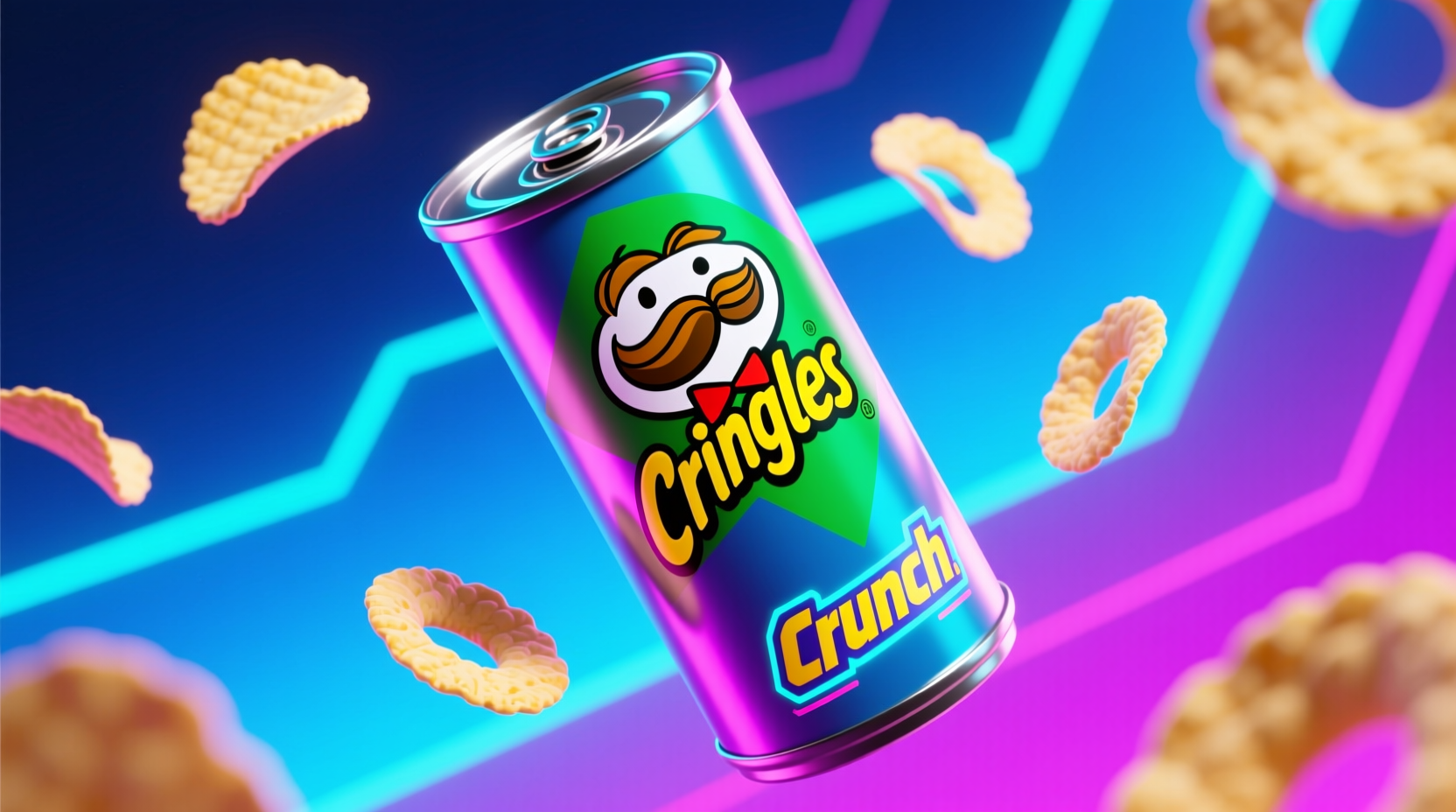Pringles are not technically potato chips but a unique potato-based snack product made primarily from dehydrated potato flakes, wheat starch, and other ingredients. While they contain potato content, their manufacturing process and composition differ significantly from traditional potato chips.
Ever wondered why Pringles have that distinctive uniform shape and consistent flavor? You're not alone. Many consumers are surprised to learn that Pringles don't meet the technical definition of "potato chips" in several countries. Let's explore what makes these iconic tube-shaped snacks unique and separate fact from fiction about their composition.
The True Composition of Pringles Potato Crisps
Unlike traditional potato chips that are sliced directly from whole potatoes and fried, Pringles are engineered through a precise manufacturing process. According to Kellogg's (the current manufacturer), Pringles contain approximately 42% reconstituted potato. The remaining ingredients include:
- Wheat starch (provides structural integrity)
- Rice flour
- Corn flour
- Vegetable oils
- Salt and various seasonings
This specific formulation allows for the consistent shape, texture, and stackability that Pringles are famous for. The potato content comes in the form of dehydrated potato flakes that are mixed with other ingredients to create a dough-like substance before being pressed into shape.
| Characteristic | Pringles | Traditional Potato Chips |
|---|---|---|
| Primary Manufacturing Method | Extruded dough pressed into shape | Potato slices fried or baked |
| Actual Potato Content | Approximately 42% | Nearly 100% (plus oil and salt) |
| Shape Consistency | Perfectly uniform | Naturally irregular |
| Stackability | Engineered for stacking | Random arrangement |
How Pringles Are Made: A Unique Manufacturing Process
The Pringles production process is remarkably different from traditional chip manufacturing. Here's how they're made:
- Potatoes are processed into flakes and dehydrated
- These flakes are mixed with wheat starch, flours, and seasonings to create a dough
- The dough is rolled thin and cut into the signature oval shape
- Each piece is molded into the curved saddle shape
- They're fried in oil, dried, and seasoned
- Finally, they're stacked precisely into the iconic tube
This engineered approach allows for consistent flavor delivery and minimal breakage compared to traditional chips. The uniform shape isn't just for marketing—it's essential for the automated stacking process that fills each canister with precision.

The Potato Content Debate: Legal and Regulatory Perspectives
The question of whether Pringles qualify as "potato chips" has actually been settled in court. In 2008, the European Union's Court of First Instance ruled that Pringles did not meet the definition of "potato crisps" under EU law due to their relatively low potato content and unique manufacturing process.
As a result of this ruling, Pringles had to change their labeling in European markets from "potato crisps" to "potato-based snack" in many countries. This legal determination was based on specific criteria including:
- Minimum potato content requirements
- Traditional manufacturing methods
- Product composition standards
According to the European Commission's food legislation, products labeled as "potato chips" or "potato crisps" must be made primarily from potatoes using traditional methods.
Nutritional Profile: What You're Really Consuming
Understanding the nutritional content of Pringles requires looking beyond the "potato" question. A standard 28g serving (about 15 crisps) of Original Pringles contains:
- Calories: 150
- Total fat: 8g (including 1.5g saturated fat)
- Sodium: 170mg
- Carbohydrates: 17g
- Protein: 1g
- Fiber: 1g
Compared to traditional kettle-cooked potato chips, Pringles generally have slightly less fat but similar sodium levels. The engineered composition affects not just the shape but also how the body processes these snacks. The combination of refined starches and potato content creates a different glycemic response than whole-potato chips.
Consumer Perception and Market Success
Despite the technical distinction, Pringles have maintained strong consumer appeal since their introduction in 1967. Market research shows that consumers primarily value Pringles for:
- Consistent flavor delivery
- Minimal mess (no broken pieces at the bottom of the bag)
- Variety of flavors
- Portion control (the tube design)
A FDA consumer study on snack labeling found that while 68% of consumers believed Pringles were technically potato chips, 89% continued purchasing them regardless of the technical distinction once informed.
Why the Distinction Matters to Consumers
Understanding what Pringles really are matters for several practical reasons:
- Dietary restrictions: Those avoiding wheat or gluten need to know Pringles contain wheat starch
- Nutritional planning: The engineered composition affects how these snacks impact blood sugar
- Allergen awareness: The multiple grain components create different allergen considerations
- Consumer transparency: Knowing exactly what you're eating supports informed choices
For most consumers, the practical difference comes down to personal preference rather than technical classification. If you enjoy the consistent flavor and texture of Pringles, the technical distinction likely won't change your enjoyment. But for those with specific dietary needs or preferences, understanding the actual composition is valuable information.
Conclusion: Embracing the Unique Snack Category
Pringles occupy a distinctive space in the snack food landscape—not quite traditional potato chips, but more potato-based than many other extruded snacks. Their unique manufacturing process creates a product with consistent quality and flavor that has maintained popularity for decades.
Whether you consider them "potato chips" depends on whether you prioritize the technical definition or the consumer experience. What's undeniable is that Pringles have carved out their own successful category in the snack food market through innovative engineering and consistent quality.











 浙公网安备
33010002000092号
浙公网安备
33010002000092号 浙B2-20120091-4
浙B2-20120091-4